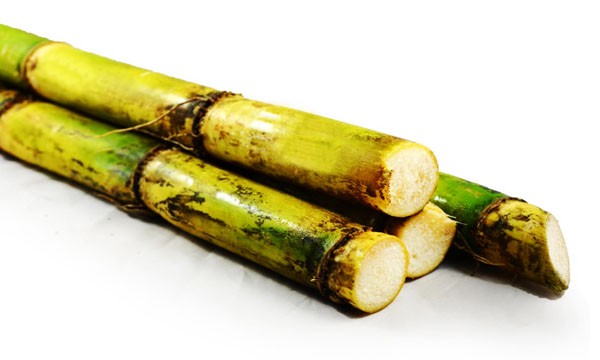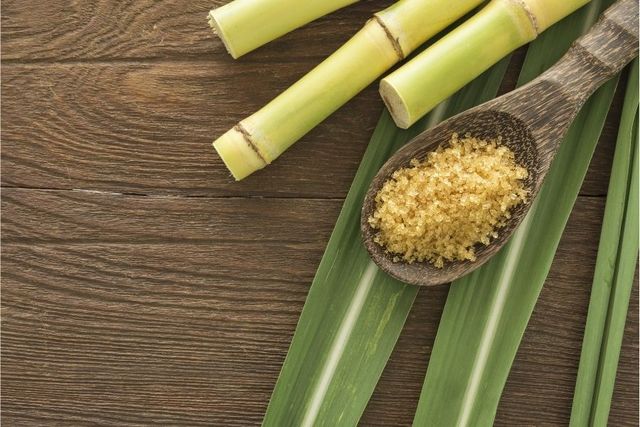Optimizing Sugar Production With Effective Walking Stick Sugar Processing Chemicals
The optimization of sugar manufacturing via the calculated use walking stick sugar handling chemicals is an important area of focus for producers intending to boost yield and top quality. Efficient application of clearing up representatives, enzymes, and flocculants can substantially impact removal performance and juice clearness, yet the intricacies of their interactions call for mindful consideration. Understanding the subtleties of these chemicals not just advertises compliance with industry standards however also straightens with sustainability goals. As the field evolves, what innovative methods and arising patterns will shape the future of sugar handling?
Relevance of Processing Chemicals
Processing chemicals play an essential role in the production of cane sugar, boosting both performance and top quality throughout the manufacturing process. These chemicals are used at various stages, including explanation, removal, and filtration, to optimize the yield and purity of the end product - sugar and cane. By facilitating the malfunction of plant cell wall surfaces, processing chemicals ensure an extra effective removal of sucrose from sugarcane, therefore increasing overall manufacturing effectiveness
Moreover, making use of processing chemicals aids in the elimination of pollutants such as dust, waxes, and non-sugars that can detrimentally impact the top quality of the sugar. This leads to a much more polished and crystal-clear item, which is important for satisfying sector criteria and customer assumptions. Additionally, these chemicals can help stabilize the sugar during storage, stopping destruction and keeping its quality over time.
The critical application of handling chemicals additionally adds to environmental sustainability by decreasing waste and boosting source effectiveness. By maximizing removal prices and lessening contaminations, producers can achieve greater success while adhering to environmental policies. On the whole, the importance of processing chemicals in cane sugar manufacturing can not be understated, as they are crucial for attaining optimal outcomes in both yield and top quality.
Sorts Of Walking Cane Sugar Handling Chemicals
A range of chemicals are utilized in the handling of cane sugar, each offering specific features to boost manufacturing effectiveness and product high quality. Amongst the most typical types are clearing up representatives, which consist of lime and phosphoric acid. These chemicals help get rid of contaminations and assist in the clarification of juice throughout the extraction procedure.
An additional crucial group is composed of flocculants and coagulants, such as polyacrylamide and jelly, which assist in the heap of suspended fragments, therefore improving the purification of sugar juices. Furthermore, sulfur dioxide is frequently used as a lightening representative, aiding in the removal of colorants while preserving the desired flavor account.
Acids, like acetic and citric acid, are essential for pH modification, promoting ideal conditions for enzymatic reactions and enhancing total sugar recovery. Antifoaming agents, such as polydimethylsiloxane, are used to mitigate foam development throughout steaming processes, making sure smooth procedures.

Advantages of Effective Chemical Usage
Making use of chemicals effectively in walking cane sugar handling yields considerable advantages that enhance both manufacturing efficiency and product high quality. The correct use processing chemicals can bring about boosted removal prices, enabling producers to maximize the return from raw walking cane sugar. Improved removal not only lowers waste yet also optimizes resource use, contributing to set you back savings.
Additionally, efficient chemical application help in the explanation and filtration phases, leading to a higher-quality final product. This is essential for fulfilling consumer expectations and regulatory requirements, as pollutants can affect preference, color, and overall marketability. The use of certain flocculants and making clear agents can expedite my latest blog post the elimination of pollutants, making sure a more clear syrup and, inevitably, granulated sugar.
Furthermore, the ideal chemicals can boost the stability of the sugar during storage space and transport, minimizing the risk of putridity and preserving high quality. This security is necessary for preserving product honesty in a competitive market. Generally, the strategic application of processing chemicals not only enhances procedures but also raises the final item, making certain that producers can provide top quality walking stick sugar successfully and sustainably.

Finest Practices for Application
Carrying out finest methods for the application of chemicals in walking stick sugar handling can substantially optimize results and improve general efficiency. It is vital to conduct a thorough evaluation of the sugarcane high quality and the certain handling needs to determine the proper chemical formulas. This tailored technique makes certain that chemicals are utilized properly and reduces waste.
Appropriate dosage is one more important element; adherence to supplier standards is vital in achieving wanted results without over-application, which can cause unfavorable environmental effects and raised prices. Routine calibration of application devices is required to ensure precise distribution and consistent coverage of chemicals.
In addition, timing of application plays an important duty. sugar and cane. Chemicals must be applied at optimal stages of the handling cycle, such as during extraction or clarification, to maximize their efficiency. Keeping track of the handling conditions, including temperature and pH levels, can better improve chemical performance
Finally, training workers on safety procedures and operational procedures is crucial. By fostering a culture of safety and conformity, facilities can mitigate risks connected with chemical handling while making sure optimal chemical application for better sugar yield and top quality.
Future Patterns in Sugar Processing
As the walking stick sugar market advances, numerous future patterns are positioned to reshape handling approaches and improve sustainability. One significant trend is the enhancing adoption of automation and electronic technologies, which streamline procedures and enhance efficiency. Advanced analytics and artificial intelligence formulas can maximize processing parameters, causing lowered waste and higher sugar returns.
In addition, the assimilation of renewable resource resources right into sugar processing facilities is on the rise. Making use of biomass power from sugarcane byproducts not only decreases the carbon impact but additionally reduces operational prices. This change straightens with international sustainability goals and improves the market's durability versus varying energy rates.

In addition, the formulation of greener handling chemicals is getting grip. Suppliers are developing non-toxic and eco-friendly choices that keep efficacy while reducing environmental impact - sugar and cane. This fad not just addresses governing pressures but also satisfies consumer needs for sustainable practices
Conclusion
The reliable application of cane sugar processing chemicals is essential to making best use of sugar production. By making use of clarifying representatives, flocculants, and enzymes, manufacturers can dramatically improve extraction rates and enhance juice quality, inevitably leading to greater returns and premium product quality. Sticking to finest techniques in chemical usage not just promotes sustainability and minimizes waste yet also positions producers to fulfill advancing industry requirements. Continual advancement and adaptation in processing methods will be necessary for future innovations in sugar production.

Comments on “Why Sugar and Cane Are Key Ingredients in Many Popular Beverages”